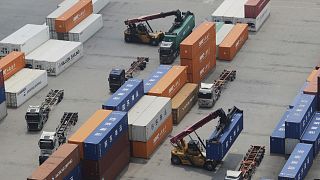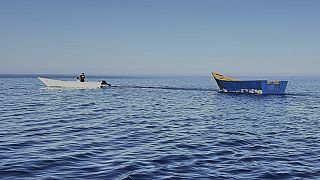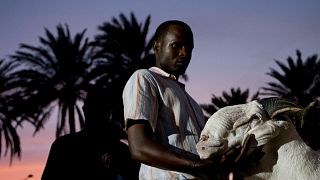Senegal
Around the village of Dak in central Senegal, women cut rice stalks with sickles and knives, singing and dancing. In this West African country, which is a major consumer of the cereal, the current harvest will not cover all needs.
"This production is for self-consumption. We don't want to buy imported rice anymore, which is very expensive," says Diétéo Diouf, head of a women's association, in the middle of the rice fields.
The global food crisis and inflation caused by the war in Ukraine and the rise in cereal and energy prices have made the search for food self-sufficiency in Africa a pressing issue.
Rice, one of the staples of the African diet, is particularly affected as India, the world's second largest producer, announced restrictions on its exports in September, raising fears of a shortage in Africa, where more than 280 million people were already undernourished by 2020 according to the UN.
The Asian giant banned the export of broken rice (rice with lower prices and accidental or unintentional fractures) and introduced a 20% tax on exports of high-quality rice to improve domestic supplies after a major drought in the main producing regions.
To combat speculation, Senegal recently set a price of 325 CFA francs per kilo (about 0.5 euros) for Indian broken rice, one of the cheapest and most widely consumed types of rice, and virtually the only one imported into the country, according to the coordinator of the national rice self-sufficiency programme, Waly Diouf.
Rice is essential for the preparation of ceebu jën, rice with fish and the most popular dish in Senegal.
Panic and tension
Africa accounts for 32% of the world's rice imports for 13% of the world's population, according to Africa Rice, a research centre in Abidjan with 28 member countries.
"Local rice production covers only about 60% of current demand in sub-Saharan Africa," the centre said.
India's decision to limit its exports has created panic in several African countries where rice is an essential commodity.
In the Comoros, an archipelago of 890,000 inhabitants where more than a quarter of the population lives on less than two euros a day, the soaring price of rice caused clashes at the end of September.
In Liberia, queues formed in front of wholesalers amid rumours of a shortage. Prices reached the equivalent of 23 euros per 25kg bag, compared to the usual 13 euros.
"The threat (of shortages) is real in Senegal" when India says it will not export any more, Diouf said. The country experienced "hunger riots" in 2008 due to a sharp increase in the price of basic foods.
Over the past two years, "Senegal has produced some 840,000 tonnes of rice each time, or nine months' consumption, a quantity that is increasing," Diouf said.
The country "imports an average of 900,000 tonnes of rice every year. This exceeds the country's needs, but importing makes it possible to guarantee the availability of the product and to avoid speculation," he explained.
Producing locally
The aim is to reduce this dependence. "By 2030, consumption in Senegal should reach 1.5 million tonnes of rice per year. We have worked on a strategy to move towards self-sufficiency," says Waly Diouf. He estimates the financial effort needed to achieve self-sufficiency at 1,371 billion CFA francs (about two billion euros).
"We need more rice fields, credit, combine harvesters and a new irrigation system," says Mouhamadou Moustapha Diack, president of a farmers' union in Boundoum (north). There, the dykes and irrigation channels between the rice fields are worn out, dotted with eucalyptus and water lilies.
Beyond the quantity, the supposedly poorer quality of rice produced in Senegal has long turned consumers away. "That has changed," Birame Diouf, head of a rice mill in Ross Béthio (north), a factory that removes impurities such as small gravels, told AFP. The grains are swallowed up in huge vats, where they are husked, cleaned and processed into whole or broken rice.
Senegal hopes to follow the example of Côte d'Ivoire where 'the quantities imported from India have fallen by 24% from 2021 to 2022. There has been a clear shift towards Ivorian rice and secondarily towards other origins," Régina Adea, communications officer for the Agency for the Development of the Rice Sector in Côte d'Ivoire (Aderiz), told AFP.











00:58
Senegalese PM Sonko says international order is shifting to a more balanced, multilateral world
01:00
Pix of the Day: July 3, 2025
01:06
China, Senegal pledge stronger strategic partnership during Beijing talks
01:43
TikTok star Khaby Lame plays soccer in Brazil after US detention
02:20
Morocco seeks to preserve traditional cooking and recipes through UNESCO project
01:08
Senegal’s fishing crisis: Overfishing, migration, survival